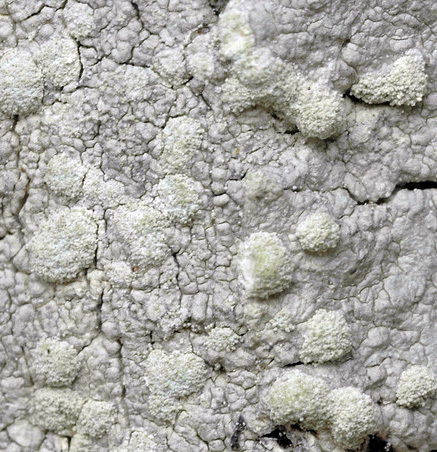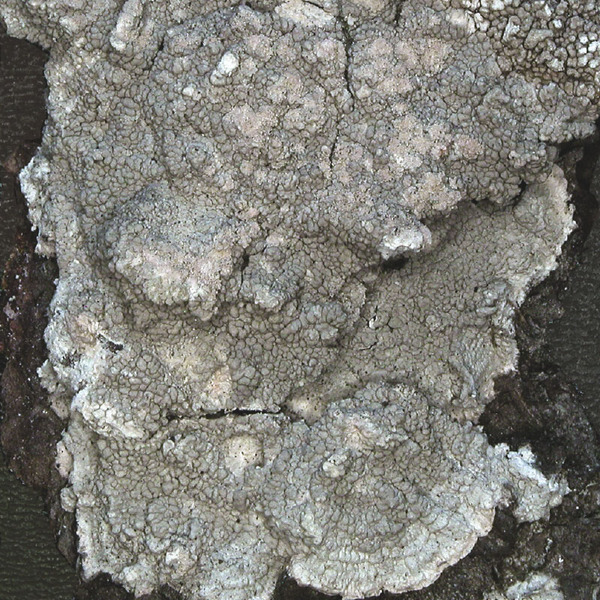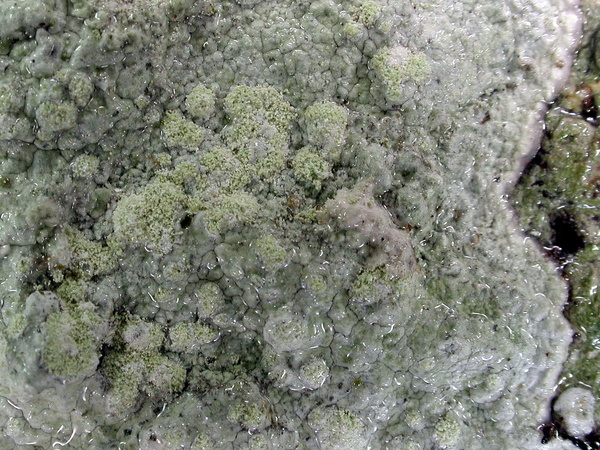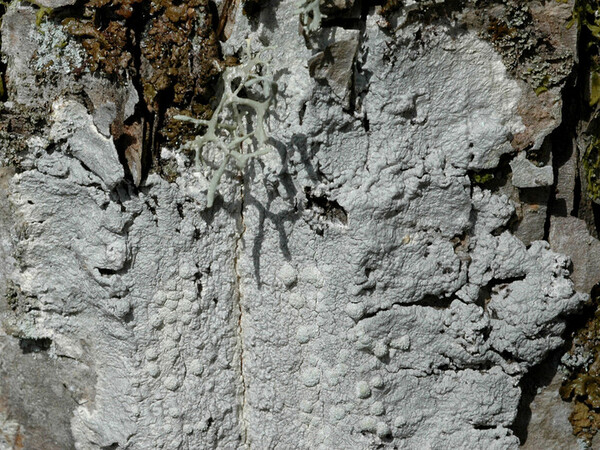Varicellaria hemisphaerica (Flörke) I. Schmitt & Lumbsch
in Schmitt & al., MycoKeys, 4: 29, 2012. Basionym: Variolaria hemisphaerica Flörke - Deutsche Lich., 2, 2: 6, 1815.
Synonyms: Lecanora parella f. variolosa (Flot.) Anzi; Ochrolechia pallescens f. variolosa (Flot.) Jatta; Pertusaria hemisphaerica (Flörke) Erichsen; Pertusaria hibernica Erichsen; Pertusaria speciosa Høeg
Distribution: N - VG (Tretiach 1993), Frl (Tretiach 1993), Ven (Lazzarin 1997, Nascimbene & al. 2007, 2013b, Nascimbene 2008c), TAA (Nascimbene & Caniglia 2000, Nascimbene 2006b, 2008b, 2014, Nascimbene & al. 2014, 2022, Nascimbene & Marini 2015, Nimis & al. 2015, Trindade & al. 2021), Lomb, Piem (Matteucci & al. 2010), Emil (Nimis & al. 1996, Tretiach & al. 2008, Fariselli & al. 2020), Lig (Putortì & al. 1999b, Giordani & al. 2002, 2025, Giordani 2006, Giordani & Incerti 2008). C - Tosc (Tretiach 1993, Tretiach & Nimis 1994, Loppi & De Dominicis 1996b, Loppi & al. 1997b, 1998, 2004c, Putortì & al. 1998, 1999, Putortì & Loppi 1999b, Senese & Critelli 2000, Laganà & al. 2002, Loppi & Frati 2006, Benesperi 2011, Frati & Brunialti 2023), Marc (Nimis & Tretiach 1999), Umb (Ravera 2000, Ravera & al. 2006), Laz (Tretiach 1993, Ravera 2002, Massari & Ravera 2002, Zucconi & al. 2013), Abr (Stofer 2006, Caporale & al. 2016, Corona & al. 2016), Mol (Nimis & Tretiach 1999, Caporale & al. 2008), Sar (Tretiach 1993, Zedda 1995, 2002b, Loi & al. 2000, Zedda & al. 2001, Rizzi & al. 2011, Di Nuzzo & al. 2022). S - Camp (Aprile & al. 2003b, Nimis & Tretiach 2004, Blasi & al. 2010, Brunialti & al. 2013, Ravera & Brunialti 2013, Catalano & al. 2016), Pugl (Nimis & Tretiach 1999), Bas (Nimis & Tretiach 1999), Cal (Tretiach 1993, Puntillo 1996, Incerti & Nimis 2006, Brackel & Puntillo 2023), Si (Nimis & al. 1994, Ottonello & Romano 1997, Grillo 1998, Grillo & Caniglia 2004, Caniglia & Grillo 2006b, Grillo & Cataldo 2008, Liistro & Cataldo 2011).
Description: Thallus crustose, rather thick, white-grey to pale grey, often with a bluish tinge, smooth to cracked or slightly warted, sometimes wrinkled, forming large patches delimited by a white, rarely brownish, often zoned prothallus. Soralia rounded, 0.8-1.5(-2) mm across, usually discrete and strongly convex, sometimes coalescing when old, especially in central parts of thallus, white to pale green-grey; soralia granular, 40-100 μm in diam. Cortex thin, cartilaginous, paraplectenchymatous, of thick-walled, agglutinated hyphae; medulla white, of periclinally arranged hyphae. Apothecia unknown. Photobiont chlorococcoid. Spot tests: thallus K-, C-, KC-, P; soralia K-, C+ carmine red; KC+ red, P-, UV+ bluish white. Chemistry: lecanoric acid (major), sometimes with additional variolaric acid.Note: a mild-temperate species found on old deciduous trees, mainly oaks, in open forests, widespread throughout the country but not common, with optimum below the montane belt. For further details see Kosecka & Oset (2024).
Growth form: Crustose
Substrata: bark
Photobiont: green algae other than Trentepohlia
Reproductive strategy: mainly asexual, by soredia, or soredia-like structures (e.g. blastidia)
Commonnes-rarity: (info)
Alpine belt: absent
Subalpine belt: absent
Oromediterranean belt: absent
Montane belt: very rare
Submediterranean belt: rare
Padanian area: absent
Humid submediterranean belt: rather rare
Humid mediterranean belt: very rare
Dry mediterranean belt: absent

Predictive model
Herbarium samples
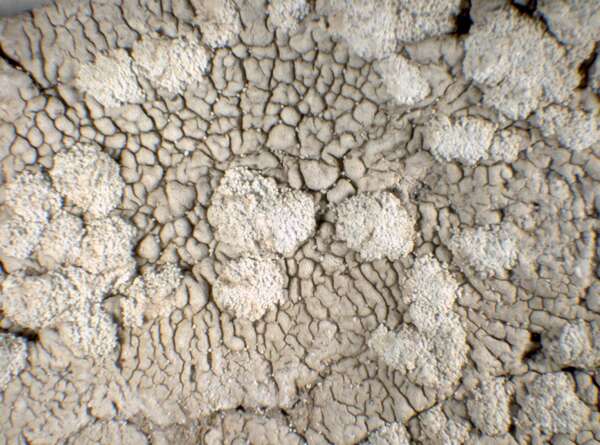

P.L. Nimis; Owner: Department of Life Sciences, University of Trieste
Herbarium: TSB (31541)
2001/12/10


E. Pittao; Owner: Department of Life Sciences, University of Trieste
Herbarium: TSB (TSB 14822)
20.10.2009
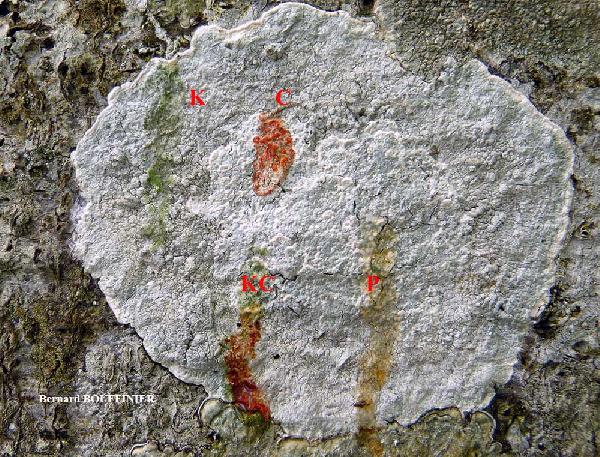
Bernard Bouffinier - Source: http://www.lichensmaritimes.org/index.php?task=fiche&lichen=686&lang=en
France, Forêt d'Iraty sur Fagus
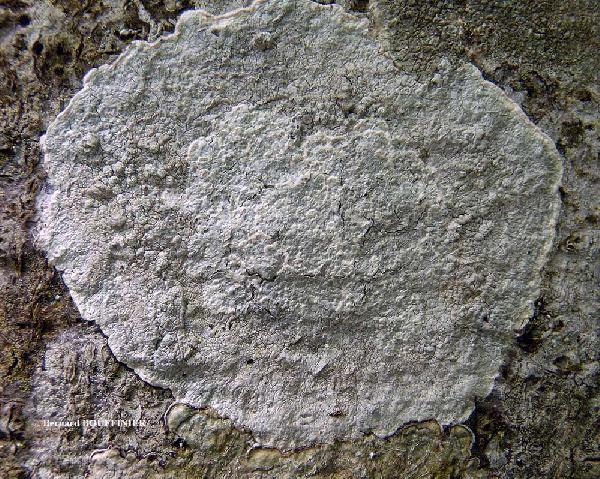
Bernard Bouffinier - Source: http://www.lichensmaritimes.org/index.php?task=fiche&lichen=686&lang=en
France, Forêt d'Iraty sur Fagus
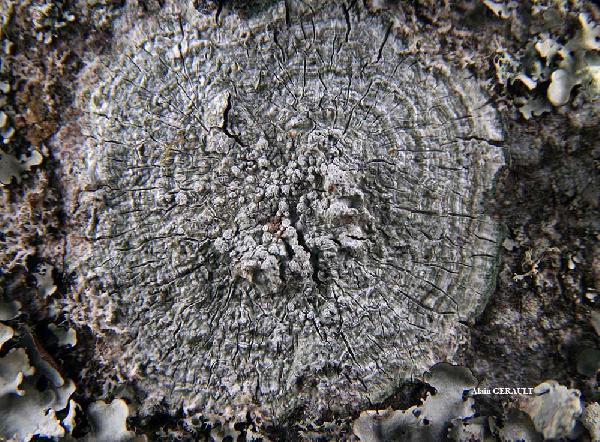
Alain Gerault - Source: http://www.lichensmaritimes.org/index.php?task=fiche&lichen=686&lang=en
France, Huelgoat
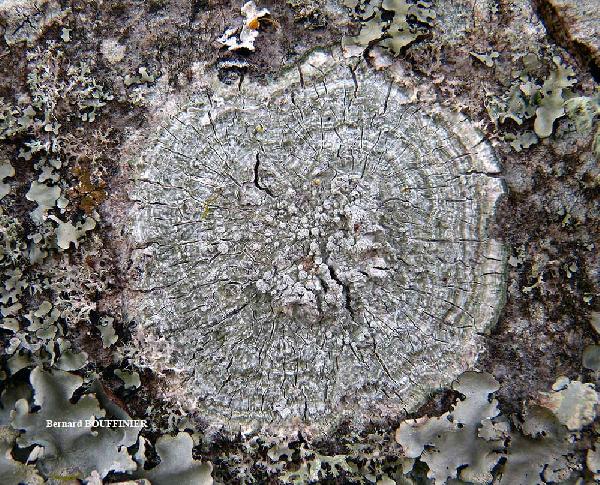
Alain Gerault - Source: http://www.lichensmaritimes.org/index.php?task=fiche&lichen=686&lang=en
France, Huelgoat
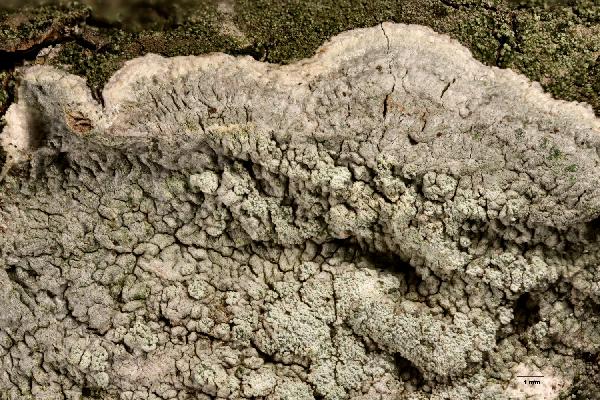
Ulrich Kirschbaum CC BY-SA 4.0 - Source: https://www.thm.de/lse/ulrich-kirschbaum/flechtenbilder
On Pinus halepensis/brutia.
Soralia C+ red, KC+ red, Pd-.
SE Europe; N-Cyprus; SE of Girne; Beşparmak Mountains; between Alevkaya and Antiphonitis Monastery
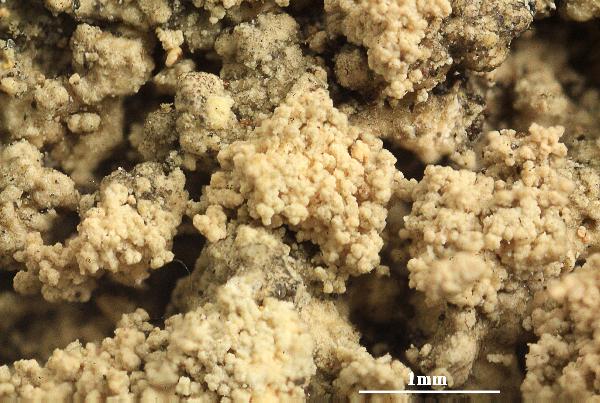

Felix Schumm - CC BY-SA 4.0
[10729], Germany, Baden-Württemberg, Nordschwarzwald, Kreis
Calw, nördlich von Würzbach, ca. 600-700 m, an Nadelbäumen. TK:
7217. Leg. F. Schumm 28.05.1970, det. O. Klement, 1970. - HPLC
(p237/5): lecanoric (maj), Triterpenoide vielleicht aus der Rinde. Thallus
K+ gelb, KC+ rot, P-; Soredien K+ gelb, C+ rot, P-.
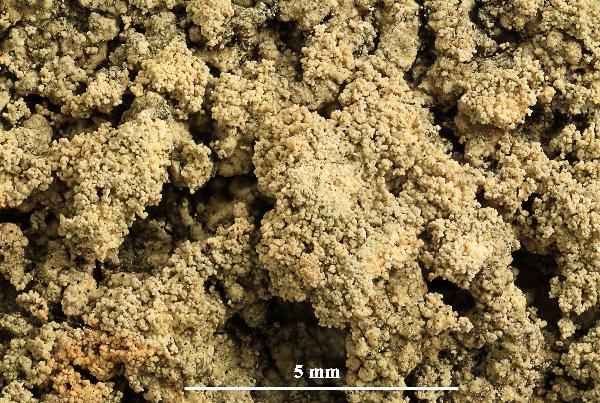

Felix Schumm - CC BY-SA 4.0
[10729], Germany, Baden-Württemberg, Nordschwarzwald, Kreis
Calw, nördlich von Würzbach, ca. 600-700 m, an Nadelbäumen. TK:
7217. Leg. F. Schumm 28.05.1970, det. O. Klement, 1970. - HPLC
(p237/5): lecanoric (maj), Triterpenoide vielleicht aus der Rinde. Thallus
K+ gelb, KC+ rot, P-; Soredien K+ gelb, C+ rot, P-.


Felix Schumm - CC BY-SA 4.0
[10729], Germany, Baden-Württemberg, Nordschwarzwald, Kreis
Calw, nördlich von Würzbach, ca. 600-700 m, an Nadelbäumen. TK:
7217. Leg. F. Schumm 28.05.1970, det. O. Klement, 1970. - HPLC
(p237/5): lecanoric (maj), Triterpenoide vielleicht aus der Rinde. Thallus
K+ gelb, KC+ rot, P-; Soredien K+ gelb, C+ rot, P-.
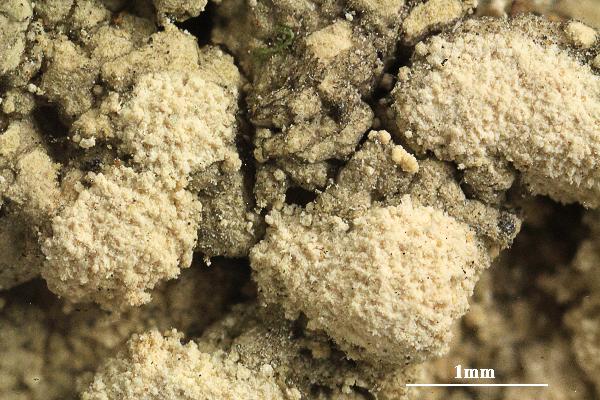

Felix Schumm - CC BY-SA 4.0
[1327], GERMANY: Baden-Württemberg, Stuttgart, Rotwildpark, an
Carpinus. TK: 7220/2. Leg. E. Putzler, 22.09.1947, det. O. Klement. -
HPLC (p237/6): lecanoric (maj). Thallus K- bis dunkel, C+ rot, KC+
rot, P-; Mark: KC+ rot, C+ rot, P-; Soredien: K-, C+ rot, KC+ rot, P-.
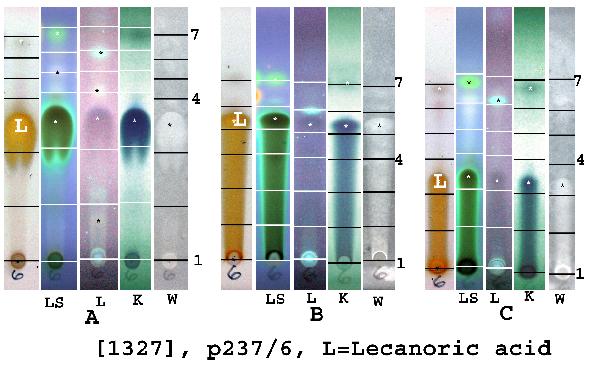

Felix Schumm - CC BY-SA 4.0
[1327], GERMANY: Baden-Württemberg, Stuttgart, Rotwildpark, an
Carpinus. TK: 7220/2. Leg. E. Putzler, 22.09.1947, det. O. Klement. -
HPLC (p237/6): lecanoric (maj). Thallus K- bis dunkel, C+ rot, KC+
rot, P-; Mark: KC+ rot, C+ rot, P-; Soredien: K-, C+ rot, KC+ rot, P-.

Source: Schmitt I, Otte J, Parnmen S, Sadowska-Deś A, Luecking R, Lumbsch T (2012) A new circumscription of the genus Varicellaria (Pertusariales, Ascomycota). MycoKeys 4: 23-36. - CC BY-4.0
Germany, 15.4.2004, Schmitt (FR)
Scale bar: 1mm. Images were taken with an Olympus SC30 camera under an Olympus SZX7 stereomicroscope.
Growth form: Crustose
Substrata: bark
Photobiont: green algae other than Trentepohlia
Reproductive strategy: mainly asexual, by soredia, or soredia-like structures (e.g. blastidia)
Commonnes-rarity: (info)
Alpine belt: absent
Subalpine belt: absent
Oromediterranean belt: absent
Montane belt: very rare
Submediterranean belt: rare
Padanian area: absent
Humid submediterranean belt: rather rare
Humid mediterranean belt: very rare
Dry mediterranean belt: absent

Predictive model
| Herbarium samples |


P.L. Nimis; Owner: Department of Life Sciences, University of Trieste
Herbarium: TSB (31541)
2001/12/10


E. Pittao; Owner: Department of Life Sciences, University of Trieste
Herbarium: TSB (TSB 14822)
20.10.2009

Bernard Bouffinier - Source: http://www.lichensmaritimes.org/index.php?task=fiche&lichen=686&lang=en
France, Forêt d'Iraty sur Fagus

Bernard Bouffinier - Source: http://www.lichensmaritimes.org/index.php?task=fiche&lichen=686&lang=en
France, Forêt d'Iraty sur Fagus

Alain Gerault - Source: http://www.lichensmaritimes.org/index.php?task=fiche&lichen=686&lang=en
France, Huelgoat

Alain Gerault - Source: http://www.lichensmaritimes.org/index.php?task=fiche&lichen=686&lang=en
France, Huelgoat

Ulrich Kirschbaum CC BY-SA 4.0 - Source: https://www.thm.de/lse/ulrich-kirschbaum/flechtenbilder
On Pinus halepensis/brutia. Soralia C+ red, KC+ red, Pd-. SE Europe; N-Cyprus; SE of Girne; Beşparmak Mountains; between Alevkaya and Antiphonitis Monastery


Felix Schumm - CC BY-SA 4.0
[10729], Germany, Baden-Württemberg, Nordschwarzwald, Kreis Calw, nördlich von Würzbach, ca. 600-700 m, an Nadelbäumen. TK: 7217. Leg. F. Schumm 28.05.1970, det. O. Klement, 1970. - HPLC (p237/5): lecanoric (maj), Triterpenoide vielleicht aus der Rinde. Thallus K+ gelb, KC+ rot, P-; Soredien K+ gelb, C+ rot, P-.


Felix Schumm - CC BY-SA 4.0
[10729], Germany, Baden-Württemberg, Nordschwarzwald, Kreis Calw, nördlich von Würzbach, ca. 600-700 m, an Nadelbäumen. TK: 7217. Leg. F. Schumm 28.05.1970, det. O. Klement, 1970. - HPLC (p237/5): lecanoric (maj), Triterpenoide vielleicht aus der Rinde. Thallus K+ gelb, KC+ rot, P-; Soredien K+ gelb, C+ rot, P-.


Felix Schumm - CC BY-SA 4.0
[10729], Germany, Baden-Württemberg, Nordschwarzwald, Kreis Calw, nördlich von Würzbach, ca. 600-700 m, an Nadelbäumen. TK: 7217. Leg. F. Schumm 28.05.1970, det. O. Klement, 1970. - HPLC (p237/5): lecanoric (maj), Triterpenoide vielleicht aus der Rinde. Thallus K+ gelb, KC+ rot, P-; Soredien K+ gelb, C+ rot, P-.


Felix Schumm - CC BY-SA 4.0
[1327], GERMANY: Baden-Württemberg, Stuttgart, Rotwildpark, an Carpinus. TK: 7220/2. Leg. E. Putzler, 22.09.1947, det. O. Klement. - HPLC (p237/6): lecanoric (maj). Thallus K- bis dunkel, C+ rot, KC+ rot, P-; Mark: KC+ rot, C+ rot, P-; Soredien: K-, C+ rot, KC+ rot, P-.


Felix Schumm - CC BY-SA 4.0
[1327], GERMANY: Baden-Württemberg, Stuttgart, Rotwildpark, an Carpinus. TK: 7220/2. Leg. E. Putzler, 22.09.1947, det. O. Klement. - HPLC (p237/6): lecanoric (maj). Thallus K- bis dunkel, C+ rot, KC+ rot, P-; Mark: KC+ rot, C+ rot, P-; Soredien: K-, C+ rot, KC+ rot, P-.

 INDEX FUNGORUM
INDEX FUNGORUM
 GBIF
GBIF
 DOLICHENS
DOLICHENS
